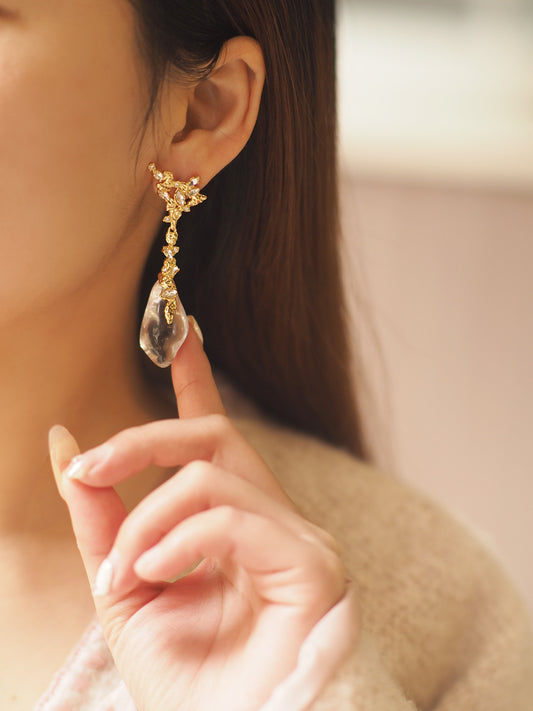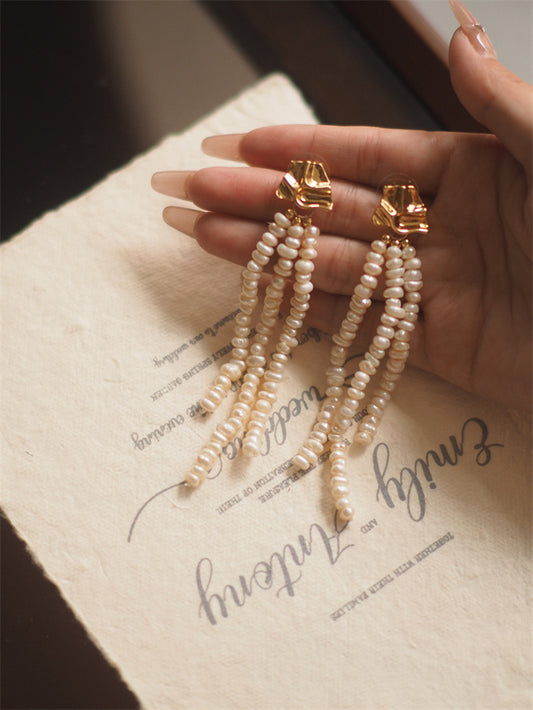Image source:Pin
Pearls have long symbolized timeless elegance and quiet confidence. Yet in today’s market, it’s easy to feel uncertain — are the pearls you bought truly real, or just well-made imitations?
This guide will help you understand what makes a real pearl unique, the common types of fake pearls, and how to tell them apart safely and accurately.
Image source:Pin
What Makes a Pearl “Real”?
Real pearls form naturally inside oysters or mussels when an irritant becomes coated with layers of nacre — a crystalline substance secreted by the mollusk.
This natural process gives genuine pearls their unique glow, depth, and warmth.
There are two main types of real pearls:
- Freshwater Pearls: Grown in rivers and lakes. They often have a softer luster, natural variations in shape, and beautiful pastel hues.
- Saltwater Pearls: Including Akoya, Tahitian, and South Sea pearls. These are known for their high luster, rounder shape, and rich radiance.
Each genuine pearl carries the gentle fingerprint of time — no two are ever exactly the same.
Common Types of Fake Pearls
Fake pearls (also called imitation or artificial pearls) are man-made to mimic the beauty of real ones.
While some are beautifully crafted, they don’t have the layered nacre or organic glow that define natural pearls.
Here are the most common types you’ll encounter:
- Shell Pearls: Made from ground-up shell material coated with synthetic pearl paint.
- Plastic Pearls: Lightweight and inexpensive, usually with an overly glossy finish.
- Glass Pearls: Heavier than plastic, but too perfectly round and smooth; lack nacre layers.
- Majorica Pearls: A famous Spanish brand using glass cores and fish-scale coating — often marketed as “handmade organic pearls,” but still synthetic.
Common Myths About Testing Pearls
You may have heard advice like “scratch the pearl to see if it’s real” or “rub it on your teeth.”
These methods are outdated and damaging.
- Real pearls might release a white powder when scraped, but this permanently harms the surface.
- Their nacre is delicate — even a light scratch can leave visible marks or weaken the luster.
- Professional gemologists never use destructive methods to test pearls.
Safe Ways to Tell If Pearls Are Real
1. Visual Inspection (“Look”)
- Surface: Real pearls show subtle irregularities and soft, layered nacre textures. Fakes look too smooth or plastic-like.
- Luster: Genuine pearls display deep, multi-dimensional reflections; imitation pearls have flat, mirror-like shine.
- Drill Holes: Real pearls usually have tiny, neat holes (<1mm) showing nacre layers. Fakes often have large, messy holes with visible paint residue.
2. Touch Test (“Feel”)
- Weight: Real pearls feel dense but not heavy. Plastic pearls feel too light; glass ones too heavy.
- Temperature: Real pearls feel cool when first touched, then gently warm to your skin.
3. Light Test (“Shine a Light”)
Use a flashlight to observe the internal structure:
- Real pearls reveal soft concentric layers.
- Shell pearls show clear flat layers.
- Glass pearls look completely solid or transparent inside.
Tests You Should Avoid
Some tests like burning or scraping can technically show authenticity but will ruin your jewelry.
They should only be performed by certified labs such as GIA or NGTC under professional supervision.
When in Doubt — Get It Professionally Tested
If you’re unsure about your pearls, send them to a recognized gemological lab for identification.
In the U.S.: GIA (Gemological Institute of America)
Avoid unverified certificates from small or online “labs” that aren’t accredited — authenticity reports from reputable institutions are your best assurance.
Final Thoughts
Real pearls carry more than beauty — they hold the essence of nature and time. Each layer of nacre reflects patience, grace, and individuality.
By learning to recognize the subtle differences between real and imitation pearls, you not only protect your investment but also learn to appreciate the quiet luxury of authenticity.
Explore Genuine Pearls
Discover our curated collection of authentic freshwater and saltwater pearls, handcrafted in S925 silver and designed for everyday elegance.













